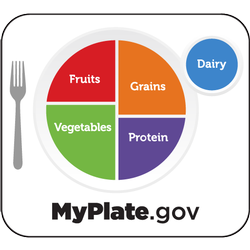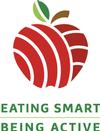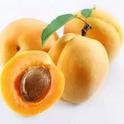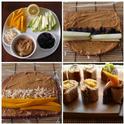EFNEP Adult Nutrition Education

|
Who We Are
EFNEP's Mission: To assist low-income youth and families with young children to acquire knowledge, skills, attitudes, and changed behavior necessary to choose nutritionally sound diets and to contribute to their personal development and the improvement of total family diet and nutritional welfare.
For more information about the Expanded Food and Nutrition Education Program click here.
What We Do

Lessons are learner-centered with activities for practicing newly learned healthy living skills and physical activities. These goals are attained through a series of lessons conducted in small groups.
Target Audience: Families with children under 18 years. Participants should be responsible for planning and preparing family meals.
Eligibility: Participants must satisfy one of the following:
- Receive or be eligible to receive federal food assistance.
- Have a monthly household cash income that is at or below 185% of the Federal Poverty Level.
- Be a pregnant teen or foster youth in transition, regardless of income or age.
EFNEP Classes

Lesson Titles and Focus
- Welcome to Eating Smart • Being Active (overview of lesson series; relationship building between educator and participants)
- Get Moving! (physical activity is part of a healthy lifestyle)
- Plan, Shop, $ave (how to stretch your food dollars)
- Fruits & Veggies: Half Your Plate (how to increase amount and variety of fruits and vegetables)
- Make Half Your Grains Whole (identify whole grain foods and why whole grains are beneficial)
- Build Strong Bones (calcium rich foods and weight bearing activity help build strong bones)
- Go Lean with Protein (choosing lean sources of protein and how to keep food safe)
- Make a Change (choosing foods low in fat, sugar, and salt)
- Celebrate! Eat Smart and Be Active (review of key concepts, celebrate what we’ve learned and how to involve family in good food choices)
EFNEP Impact
California EFNEP is making a positive impact in the lives of low-income families. Participants are making positive changes towards healthy living. They also report an increased knowledge of how to make healthy food and exercise choices with a limited budget.
For more information on EFNEP's impact click here.
¡Disfrutan las Frutas!
-

Juegue con la fruta
Haga de la fruta algo divertido creando personajes locos como los favoritos de la infancia Beto y Enrique de Plaza Sésamo. Ingredientes: 1 naranja clementina sin cáscara (guarde la cáscara) 1 plátano sin cáscara y...
-

Esos sorprendentes e increíbles chabacanos
Cuando usted piensa en los chabacanos o albaricoques se imagina una fruta jugosa y suave parecida al durazno o melocotón. ¡Piense de nuevo! También son una pequeña y poderosa caja de algunos “¡Importantes...
-

El otoño y las manzanas van de la mano
Manzanas deliciosas, frescas, crujientes y dulces son la personificación del otoño. Con tantas variedades de donde escoger, las manzanas ofrecen una gran versatilidad. Además de ser una botana perfecta, son excelentes para cocinar. Además aportan...
-

Economía del hogar 101: sushi de fruta
Con la aparición del verano llega también la temporada del regreso a clases y la desesperada necesidad de reinventar nuestras comidas. ¡Olvídese de los rollitos con sabor a frutas y las bolsitas de papitas fritas! La botana de hoy es un tanto rara y...
-

Un refrescante postre de verano. ¡Pruébelo! Le encantará
Este lunes, mientras me aburría como una ostra, me senté en mi solitario apartamento pensando en qué le daría de comer a mi estómago que me pedía comida. Quería comer algo saludable y refrescante al mismo tiempo –algo que me refrescara internamente y no...
